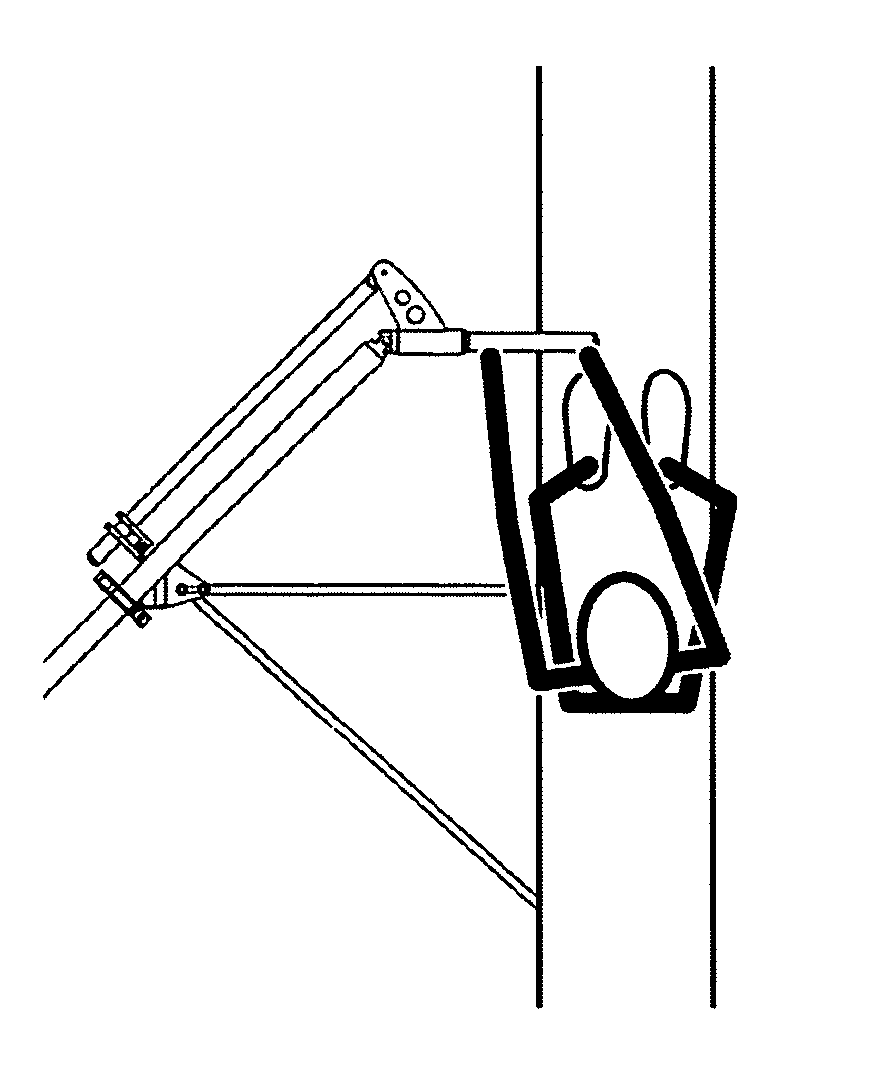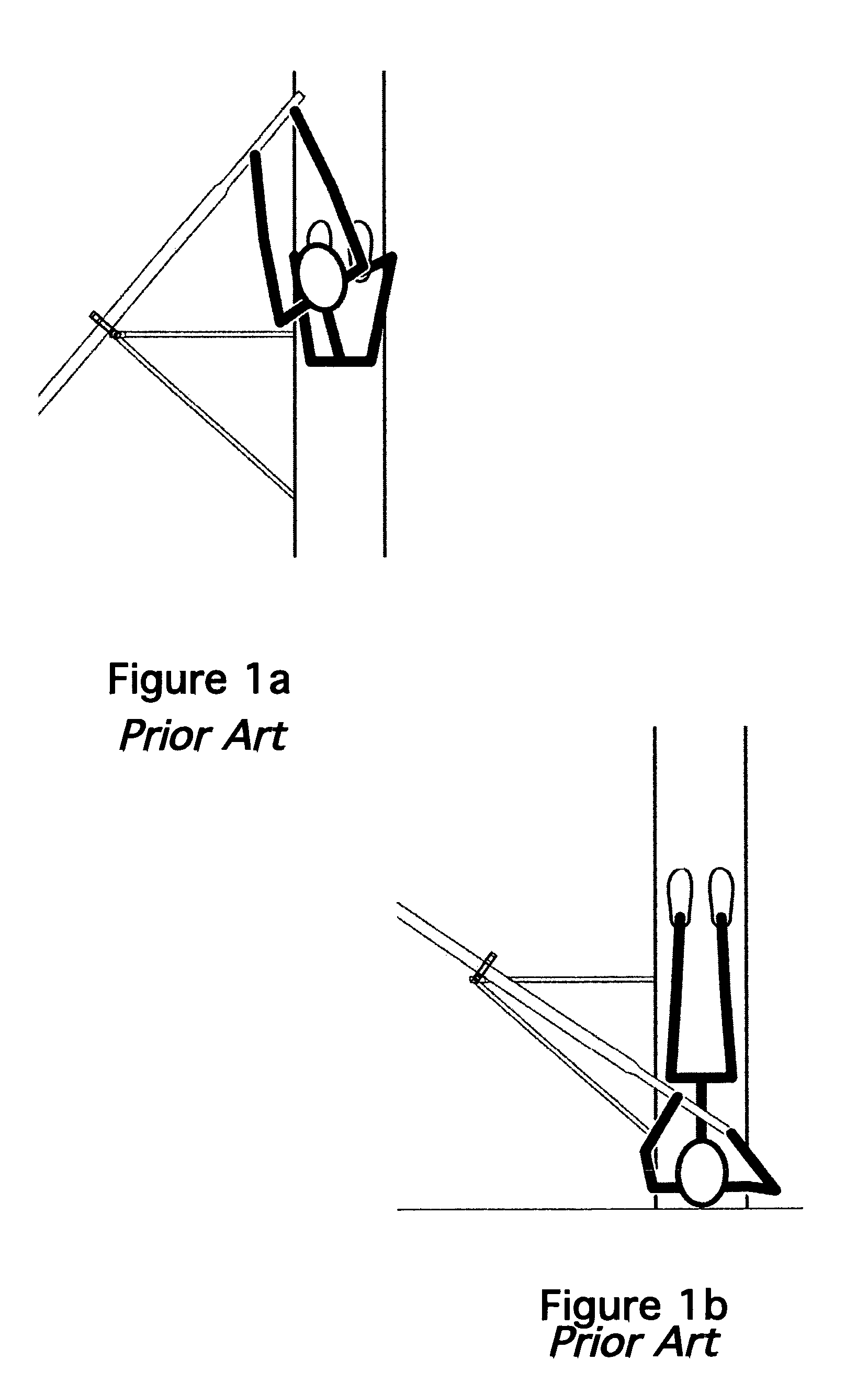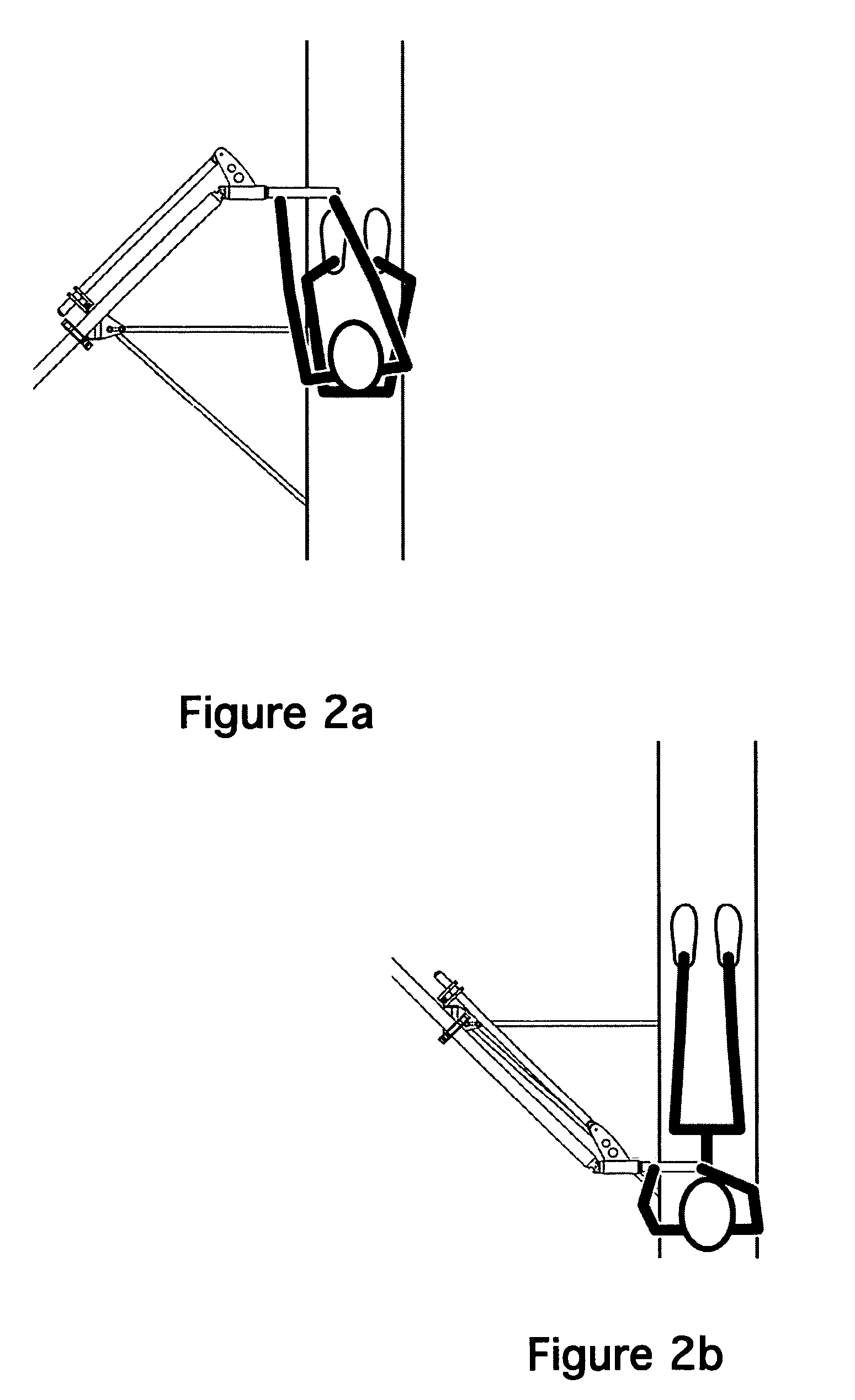Rowing oar system with articulating handle
a technology of oars and handles, applied in waterborne vessels, marine propulsion, boat construction, etc., can solve the problems of reducing reducing speed, and reducing stroke ergonomics, so as to increase stroke length and power, and increase effective stroke length
- Summary
- Abstract
- Description
- Claims
- Application Information
AI Technical Summary
Benefits of technology
Problems solved by technology
Method used
Image
Examples
Embodiment Construction
[0035]The present invention describes two alternate means to effect the functionality of the articulated handle: a single parallel link configuration and a double parallel link configuration.
[0036]Single Parallel Link Configuration
[0037]The first and preferred method is a single-parallel link configuration consisting of the main oar shaft and one parallel link. This is shown in FIG. 3. This design incorporates one parallelogram, on one side of the main oar shaft to keep the handle perpendicular to the shell at every point in the stroke.
[0038]Double Parallel Link Configuration
[0039]The second method is a double parallel link configuration consisting of the main oar shaft and two parallel links. This is shown in FIG. 4. This design incorporates two parallelograms, one on either side of the main oar shaft, to keep the handle perpendicular to the shell at every point in the stroke.
[0040]Functionality
[0041]From an operational standpoint, the improved oar is functionality is the same as t...
PUM
 Login to View More
Login to View More Abstract
Description
Claims
Application Information
 Login to View More
Login to View More - R&D
- Intellectual Property
- Life Sciences
- Materials
- Tech Scout
- Unparalleled Data Quality
- Higher Quality Content
- 60% Fewer Hallucinations
Browse by: Latest US Patents, China's latest patents, Technical Efficacy Thesaurus, Application Domain, Technology Topic, Popular Technical Reports.
© 2025 PatSnap. All rights reserved.Legal|Privacy policy|Modern Slavery Act Transparency Statement|Sitemap|About US| Contact US: help@patsnap.com



